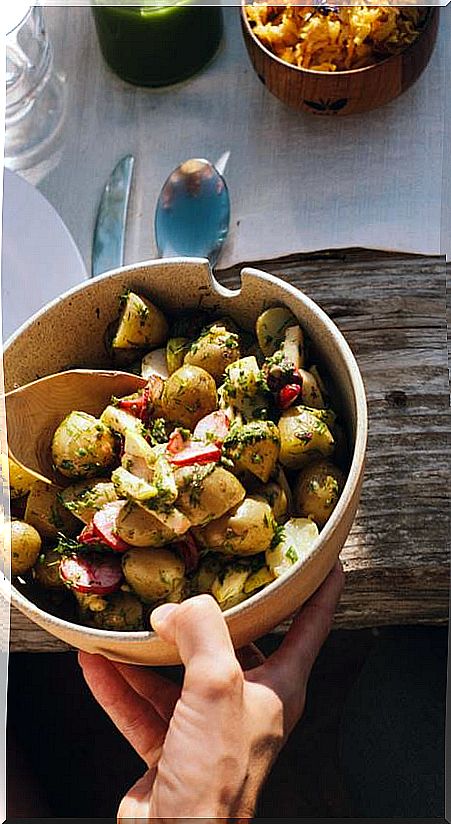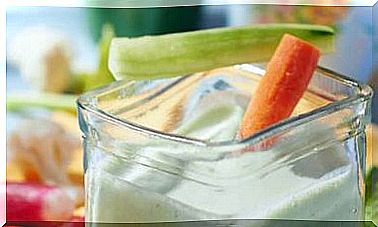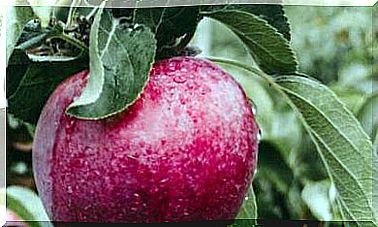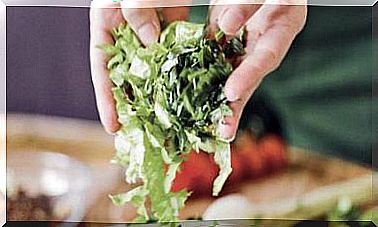Resistant Starch: Feed Your Microbiota Without Adding Calories
Resistant starch reaches the large intestine intact, where it feeds the growth of good bacteria and promotes digestion and overall health.

The bacteria that live in our intestines help us digest and break down some foods. But its function is not only digestive.
In fact, the bacteria in the intestine influence both the immune system and brain function, so our diet is essential if we want to enjoy health at all levels.
But these bacteria form a microbiota that must be kept balanced, and for this we must feed the good bacteria.
One way to do this is by consuming fresh foods rich in fiber, such as tubers, seeds, legumes, fruits and vegetables (forget about those enriched with fiber if you want to contribute benefits to the microbiota!).
Another way is by consuming a very specific type of fiber, resistant starch, which is different from that fiber that we find in previous foods in its natural state.
A prebiotic starch with many benefits
When we eat conventional starch from legumes, cereals or tubers, digestive enzymes break the starch chains and release glucose molecules. These are easily absorbed in the intestine and used by the body to generate energy or store it in the form of glycogen.
When an excess of glucose is produced , it is transformed into triglycerides and leads to overweight and obesity, among other problems.
However, resistant starch is a type of non-soluble but fermentable fiber that is not absorbed in the small intestine as glucose.
As a consequence, it passes directly to the large intestine, where our intestinal flora resides, and there it becomes food for bacteria that produce butyric acid and propionate. These substances help regulate weight loss, among many other functions.
Among the main advantages of resistant starch are:
- It reduces the absorption of carbohydrates: it makes them unavailable to us and, instead, we enhance the prebiotic effect in our intestines.
- Improves inflammation: This is due to the action of butyric acid or butyrate, which offers protection against colon cancer and improves inflammation. We find negligible amounts of this healthy fat in food compared to the amount our bacteria produce from resistant starch.
- Helps you lose weight: thanks to the production of propionate, another healthy fat, produced by bacteria in the colon thanks to the resistant starch we consume. Although there are fewer studies done, they relate it to greater satiety and less fat accumulation.
- Improves insulin resistance: it is interesting for diabetics, as it improves insulin sensitivity and reduces blood glucose levels after meals.
- Decreases intestinal permeability: improves the integrity of the intestinal mucosa and the functioning of the immune system.
Type III retrograde starch, the most effective
Not all starches are equally effective. In fact, there are 5 types, but the one that interests us especially, the superfood for the microbiota, is retrograde starch (type III).
In some foods such as raw potatoes or plantains, we find what is known as type II starch.
When cooked, a gelled starch is formed that is absorbed in the small intestine, but when the starch is allowed to cool it changes its structure and is no longer absorbable. It becomes retrograde or type III starch.
How to cook food to obtain it
To get retrograde starch that resists intestinal absorption, it is not enough to cook the food and let it cool. It is necessary that, once cooked, it remains a minimum of 24 hours in the coldest area of the refrigerator, at 4-5 ˚C.
Then, at the time of consuming the food, it can be heated slightly and consumed warm if desired. It does not need to be eaten cold.
Foods Highest in Resistant Starch
The foods richest in resistant starch are, above all, potatoes and plantains, previously cooked and refrigerated.
The cassava and other tubers, legumes and some cereals also contain said starch after cooking and cooling.
A simple recipe to start
If you want to start offering resistant starch to your microbiota, you can prepare this easy and delicious warm potato salad. Remember that you have to prepare the potato overnight:
- Roast or boil whole potatoes in their skins, to ensure they don’t rust during cold storage.
- After 24 hours, peel them and chop them if they are large.
- Heat them slightly and combine them with carrots, green leaves and some mushrooms sautéed with a handful of pine nuts.









